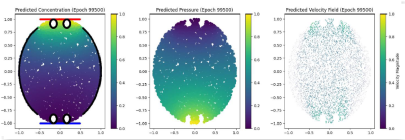Announcement of current Bachelor/Master theses, Advanced Design Projects (ADPs) and Advanced Research Projects (ARPs).
Masterthesis
Spray impact on thin wall films is an important process in many industrial applications e.g. spray cooling or internal combustion. In this process the single drop impact is an integral part. The drop impact is shaped by hydro- and thermodynamic mechanisms. One of the outcomes is a corona splash where numerous secondary drops are developing which can have a significant influence on the overall process. Its understanding and prediction therefore is of great importance.
This thesis involves the investigation of the corona splash experimentally. With an already existing experimental setup with high-speed imaging, drop impact experiments should be performed. The operational parameters should be varied systematically to investigate different influences. This is achieved by using different liquids (water, silicone oils, etc.) and by changing other parameters like film temperature, film thickness etc. Afterwards the measurements are evaluated with image processing algorithms. A focus of the evaluation lies in extending existing models for the splashing threshold and additionally in analyzing the secondary spray (drop size and velocity distribution).
Supervisor: Lukas Weimar , M.Sc.
Masterthesis
Due to the escalating extreme weather conditions, the aircraft icing events are increasingly growing. The analysis of this phenomenon has gained increased attention, particularly in the field of aviation safety. A significant contributor to icing is the occurrence of Supercooled Large Droplets (SLD), water droplets suspended in air at temperatures below freezing one. Previous experiments in the scientific community have predominantly focused on the normal impact of these droplets on solid surfaces with low velocities.
Our research aims to expand this understanding by considering rotating surfaces and high relative impact velocities. This approach will closely simulate real-world conditions that an aircraft wing's experience.
The project consists of using an existing single-water-drop impact set-up with a rotating disk and measuring, by means of a chromatic line sensor (CLS), the thickness of the ice layer formed on the disk.
Supervisor: Reda Kamal, M.Sc.
Masterthesis
Extreme weather conditions are increasingly contributing to aircraft icing events, which pose significant safety risks. The analysis of this phenomenon has gained increased attention, particularly in the field of aviation safety.
Our research aims to better understand the involved phenomena by analyzing the single drop impact on moving surfaces at high relative impact velocities and the associated heat transfer. This approach will closely simulate the real-world conditions that aircraft wings experience.
The project involves simulating the conjugate heat-transfer of a single water drop impact onto a moving substrate to replicate existing infrared-imaging experimental data.
Supervisor: Reda Kamal, M.Sc.
2025/06/13
Advanced Design Project (ADP)
After flying in a freezing condition, the aircraft wings get to a temperature below 0°C. When these wings interact with a cloud, it develops ice structures. The unprotected area on the wing poses risk of runback icing. One such areas and our area of interest is the grooves near the flaps and spoilers. Any real-life groove must have a groove curvature, which is also important while studying liquid transport. In the literature, such a groove has already been studied under an isothermal condition. However, the effects of heat transfer and phase change, which is very prominent in aircraft icing applications, has never been discussed. To capture these effects, a known but highly wettable surface must be used. As ice is super-hydrophilic, which tend to increase the rivulet spread and hence also increases the ice effected zones inside the grooves
Supervisor: Prof. Dr.-Ing. Jeanette Hussong
Masterthesis
Electric machines generate heat due to electrical losses and mechanical friction, with cooling in the rotor-stator gap typically limited to air circulation. This study explores the effect of introducing small liquid droplets into the airflow to enhance heat transfer. By investigating aerosol-based cooling, this research aims to enhance thermal management and improve the efficiency of electric machines. The project involves designing a small gap (outer cylinder), and connecting it to an existing setup, then conducting experiments to generate and analyze aerosol flow in the gap. The impacts of droplets will be recorded and analyzed, then the aerosol generator with 3 different nozzles will be characterized.
Supervisor: Samaneh Abdi Qezeljeh, M.Sc.
2024/11/05
Masterthesis
As part of the FlowForLife research project, a microfluidic supply network for 3D cell clusters is being developed. One aspect of the network design is the oxygen transport in the surrounding matrix. To characterize this, oxygen quenching luminescent particles are added to the surrounding matrix. The oxygen concentration can be determined at each particle.
From these sparse pointwise concentration data, the flow field in the porous surrounding matrix is to be determined. A solution of the convection-diffusion equation representing the measured concentration field must be found so that conservation of mass and momentum is satisfied in the underlying flow field. Physically-informed neural networks (PINNs) are a promising approach to find such a solution. In this thesis a PINN code should be developed and the achievable accuracy is to be evaluated. The following tasks could be part of the thesis:
Supervisor: Till Werner, M.Sc.
Advanced Design Project (ADP)
Within the research project FlowForLife, a microfluidic supply network for 3D cell clusters is being developed. Therefore, micro channels are studied with regard to their flow as well as the oxygen transport into the surrounding medium or tissue. The oxygen transport of enriched fluid into the surrounding hydrogel matrix will be measured using phosphorescent particles.
Supervisor: Till Werner, M.Sc.







